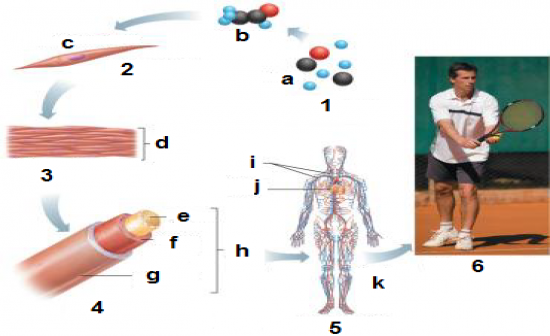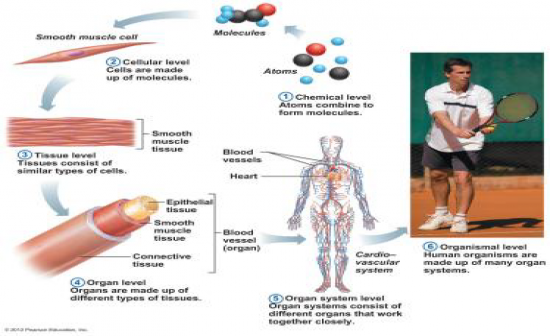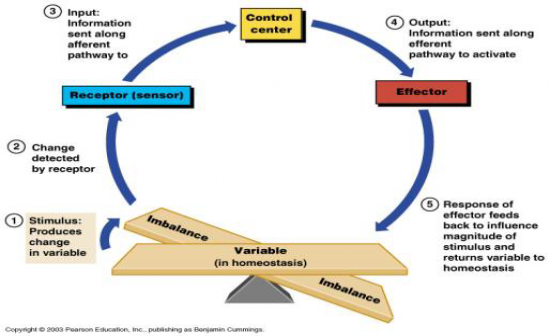Cards In This Set
| Front | Back |
|
Define Anatomy
|
The study of the structure and shape of the body and its parts
|
|
Define Physiology
|
The study of how the body and its parts work and function
|
|
What are the two levels of Anatomy study?
|
Gross Anatomy - can bee seen with the naked eye.
Microscopic Anatomy - requires a microscope to see |
|
What are the levels of structural organisation form simpliest to most complex?
|
Chemical level - atoms and molecules
Cellular level - individual cell Tissue - tissues consist of similar types of cells Organ level - A structure of tissues that perform a particular function. Organ System level - consist of different organs working together Organismal level - made up of many organ systems |
 Fill in the gabs |
 |
|
What is a tissue?
|
Groups of similar cells with a common function that enable the body to work.
Tissue are organised into organs. |
|
The body is made up of what type of tissues?
|
Epithelial tissue - covering
Muscle tissue - Movement Neurvous tissue - Control Connective tissue - support |
|
What is homeostasis?
|
Maintanance of a stable internal environment = dynamic state of equilibrium
|
|
Why is homeostasis important?
|
Homeostasis must be maintained for normal body functioning and to sustain life
Homeostasis imbalance = a distrubance in homeostasis resulting in disease |
|
Draw the homeostasis control mechanism
|
 |
|
What cntrol systems does the body use to communicate?
|
The body communicates through neural and hormonal control systems
|
|
Homeostasis: What does the receptor do?
|
Responds to changes in the environment (STIMULI) and sends information to the control center via the afferent pathway
|
|
Homeostasis: What does the the control center do?
|
Determines set points, analyzes information, determines appropriate response to send to the effector throught the efferent pathway
|
|
Homeostasis: What does the effector to?
|
Provides a means for response to the stimulus
|
|
Homeostasis: What are the feedback mechanisms?
|
Negative feedback - involved in most homeostatic control (x birth & blood clotting), shuts off the original simulus, or reduces its intensity (like a therostat)
Positive feedback - increases the original stimulus to push the varible farther only in birth and blood clotting. |



